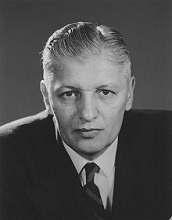
Learn more about CSE's history
Born of Canada’s joint military and civilian code-breaking and intelligence efforts during the Second World War, CSE was founded in 1946 as Canada’s signals intelligence and communications security agency.
Throughout the decades since its founding, through shifts in technology and tradecraft that have taken us from the very beginnings of the Cold War to the challenges of cyberspace today, CSE has remained focused on its mission: providing Canada with foreign signals intelligence vital to national security and protecting Government of Canada communications.
Our story
A brief history of CSE
Blogs
Sharing our stories
75th anniversary
Celebrating CSE’s 75th anniversary
Artifacts
Short documentaries about CSE’s history
Archives
An online collection of CSE’s archives
Timeline
A timeline of notable events
CSE badge
The CSE Badge was designed by the Chief Herald of Canada and given to CSE in October 1994. The use of the Royal Crown itself was approved by the Queen. The blue circle represents the world of information, and the gold circle and maple leaf symbolize Canada. The lightning flashes stand for communications while the key represents the secure and sensitive nature of the data that CSE handles.
The Chief Herald envisioned our badge as "a source of inspiration and focus of pride in what we have accomplished together and what we have determined for the future. Hundreds of years from now (the badge) will still be in use, identifying the services of CSE and enshrining the spirit of all those who compose the Establishment."
The Latin motto on the badge – Nuntium Comparat et Custodit – translates as “Providing and protecting information”.

Edward Drake
The Edward Drake Building was named for Lt. Colonel Edward Drake, a pioneer of the Canadian signals intelligence. Drake’s career in signals intelligence spanned four decades.
In 1945 he served as the director of the wartime joint discrimination unit, which brought together signals intelligence units from Canada’s Navy, Army, Air Force and the Civilian Examination Unit.
In 1946, Drake was named Director of Canada’s first peace time cryptologic agency, the Communications Branch of the National Research Council, or the CBNRC. The CBNRC grew under his leadership for 25 years, and in 1975, became the Communications Security Establishment.

History and international partners
CSE maintains a number of partnerships and relationships with organizations in Canada and around the world.
Five-Eyes partners
For more than seventy years Canada has maintained close intelligence relationships with the US, the UK, Australia and New Zealand. The history of our organizations is, in many ways, a shared history.
For more information on the history of our partners, check out the links below:
Around Canada
- Library and Archives Canada. As the custodian of our distant past and recent history, Library and Archives Canada (LAC) is a key resource for all Canadians who wish to gain a better understanding of who they are, individually and collectively. LAC acquires, processes, preserves and provides access to our documentary heritage and serves as the continuing memory of the Government of Canada and its institutions.
- Kingston Military Communications & Electronics Museum. The MC&E museum offers a look into snapshots of time, both distant and near, depicting the history of Canadian military communication.


